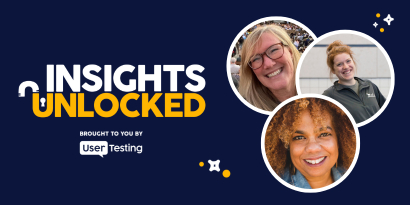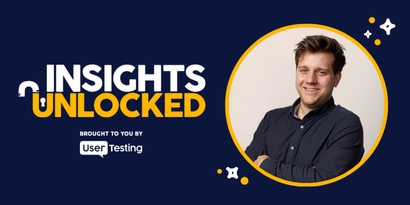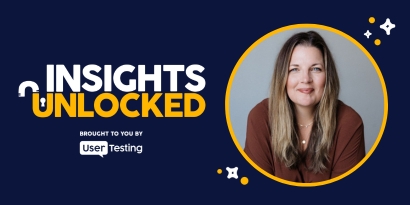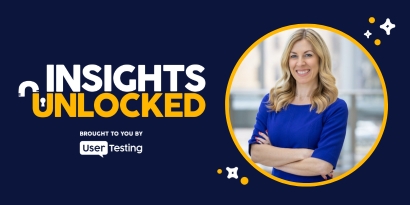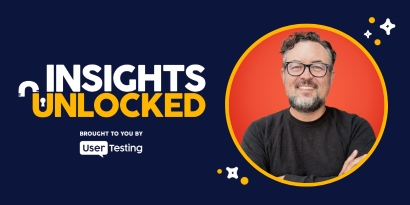
Episode 167 | April 21, 2025
How leaders can win with AI with Greg Shove of Section
Greg Shove shares how leaders can drive AI transformation, overcome adoption barriers, and unlock AI’s potential in business and customer experience.
The future of leadership is AI-powered: How to drive meaningful transformation in your organization
What if your most valuable board member never showed up in person, never nagged you about their investment—and never slept?
For Greg Shove, CEO of Section, that’s exactly what AI has become: an indispensable, tireless thought partner that’s reshaping how leaders operate. In a recent Insights Unlocked episode, Greg shared how a single interaction with ChatGPT was the catalyst for transforming his company and his approach to leadership.
The result? A powerful roadmap for embracing AI transformation in business, from the C-suite to the frontlines. “This was going to be my cognitive edge—the way that would keep me sharp and keep me working,” he said.
Why AI transformation starts at the top
The conversation opens with a pivotal moment: February 1, 2023. That’s the day Greg had what he calls his "aha" moment with generative AI.
Exploring ChatGPT, he realized AI wasn't just a productivity boost—it was a game-changing force for decision-making, innovation, and leadership. It prompted him to pivot his company, Section, into an AI-first business school aimed at helping professionals build the skills needed to thrive in the age of automation.
But Greg is quick to point out that AI transformation isn’t just about tech—it’s about leadership. Specifically, it’s about how executives can shift from passive observers to active explorers of AI. “Every executive,” he said, “Every leader in any industry should be using AI at work as a thought partner—and frankly, at home as well.”
GUIDE
Generative AI chatbots: overhyped but still underestimated
What are people doing with AI chatbots? What benefits do they get? How do they feel about them? Which chatbots appeal to the most people? And what does all of this mean for companies looking to create AI-based products, and to adopt AI in their businesses? Find out in the report.
Common barriers to AI adoption in business
Despite the promise, many companies struggle with AI adoption in business. Greg highlights three major roadblocks:
- Fear and anxiety: Media narratives often frame AI as a job killer, creating resistance among employees and uncertainty among leaders.
- Lack of training: Many employees haven’t received meaningful AI training—if any at all.
- Restrictive data policies: Without access to proprietary company data, AI tools lose much of their utility, particularly for high-value decision-making.
Greg argues that companies often treat AI like traditional software, which he says is a big mistake. “AI is not software,” he said. “It doesn't behave like software. We don't interact with it like software. It’s more like a co-worker or a teammate—sometimes brilliant, sometimes not.”
To overcome these barriers, he urges leaders to reframe how they think about AI tools. Instead of locking down usage or centralizing ownership under IT, companies should empower employees across functions to explore and innovate.
Language-intensive functions are leading the charge
When it comes to identifying early success stories, Greg points to language-intensive roles such as marketing, sales, customer service, and software development. These areas have been quick to adopt AI-powered decision making because the tools can easily slot into existing workflows.
In fact, he calls software engineers the “canaries in the coal mine” for enterprise AI strategy. “Code is just a language. And wherever language is core to the work, AI will go there first,” Greg said.
At Section, functional AI courses like AI for marketers and AI for finance professionals are among the most popular—underscoring how employees want to apply generative AI directly to their day-to-day tasks.
How to start experimenting with AI in your organization
The key to successful AI transformation? Experimentation—with intention.
Shove encourages leaders to run small, focused pilots across two domains:
- Internal workflows: Use AI to streamline repetitive or high-effort processes like reporting, analysis, or internal communications.
- Customer experience: Prototype AI-powered interfaces, chatbots, or agents that can help reduce friction and elevate customer service.
He likens the approach to drilling for oil: some holes will be dry, but the ones that hit will pay off big. “Forget the AI toys and gimmicks,” Greg said. “Focus on high-value use cases that deliver meaningful business outcomes.”
Who should lead your AI transformation?
When asked who should be responsible for driving AI efforts, Greg says the ideal candidate is a blend of three personas:
- The technologist – Ensures data integration, tool access, and security
- The change manager – Drives upskilling and builds a culture of curiosity
- The business strategist – Knows the workflows, priorities, and opportunities
Greg emphasizes that AI transformation is not just a tech initiative—it’s a strategic, creative, and human process. “The primary challenge isn’t technical,” he siad. “it’s knowing where AI fits, and getting the humans on board.”
ON-DEMAND WEBINAR
Effective AI: how to choose the right generative AI features—and build them fast
In this webinar, you'll learn new AI best practices, including:
- How the conversational interface is changing the way people interact with technology
- How to optimize AI for emotional impact and credibility, not just usability
- How chatbot personality affects your brand’s overall likability, and what it means to marketing when a bot becomes your corporate spokesperson
How leaders can approach the change with empathy and honesty
Greg closes the conversation with a refreshing take on leadership: be transparent about what you know, what you don’t, and where you're headed.
Some teams may grow. Others may shrink. But the constant should be communication and intentionality.
“Say to your team: We’re going to work with AI, and do it together,” Greg said. “Let’s drive the change instead of playing catch-up.”
For employees, his advice is equally practical: start small, start now. Play with tools like ChatGPT, take a course, and find your own use cases. That familiarity will become your superpower.
The future belongs to the curious
As more organizations explore enterprise AI strategy, Greg believes the most successful ones will be those that lean into learning and creativity—especially from the top.
His final message is simple, but powerful: “Don't put your head in the sand,” he said. “This is coming faster than we realize.”
Episode links:
- Connect with Greg Shove on LinkedIn
- Connect with Michael Domanic on LinkedIn
- Section School
- Greg’s website
- Five practical things a business should do about AI right now: This blog post offers actionable steps for businesses to effectively integrate AI, emphasizing the importance of treating AI as a strategic partner and addressing common adoption challenges.
- Generative AI chatbots: overhyped but still underestimated: This report delves into the current state of AI chatbot adoption in businesses, highlighting usage patterns, productivity impacts, and the need for proactive deployment strategies.
- How to tackle AI adoption to develop a competitive advantage and empower your teams: This webinar discusses strategies for evaluating organizational AI readiness, building trust in AI, and identifying impactful use cases to empower teams and drive competitive advantage.
